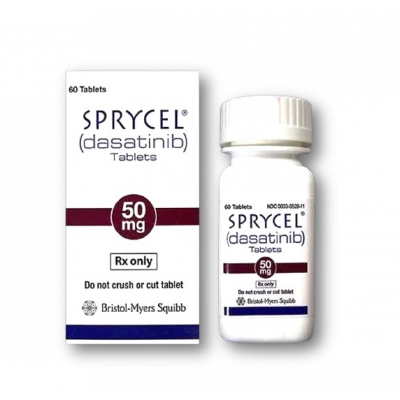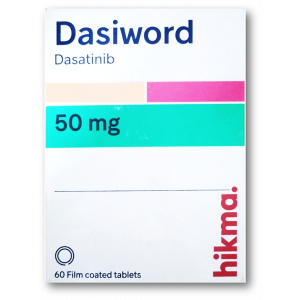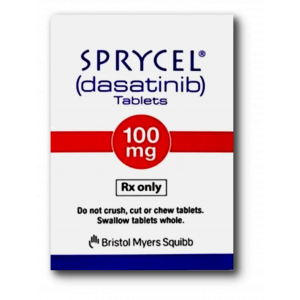- Anti-hestaminic & Respiratory Drugs (20)
- Anti-inflammatory Drugs (192) +-
- Baby & Mom (1281) +-
- Baby & Mom > Bath, skin & Hair > Skin Care > wibes (53)
- Beauty (2749) +-
- Beauty > Skin Care > whitening (273)
- Chemotherapy & Immune Response (860) +-
- Chemotherapy & Immune Response > ANTI-FUNGAL (11)
- Chemotherapy & Immune Response > Chemotherapeutic Agents > Hormone Antagonists >Enzyme Inhibitors (283)
- CIRCULATORY DISTURBANCE AGENTS (23)
- Diet & Fitness Products (276) +-
- DRUG AFFECTING CENTRAL NERVOUS SYSTEM (190)
- HEMATOLOGY (39)
-
Medical Supplies (496)
+-
- Chemicals & Disinfectants (19)
- Dental Supplies (26)
- Devices & Instruments (10)
- Diabetic Supplies (119)
- General Medical Supplies (21)
- I.V & Medical Solution (0)
- Intensive Care Unit & Anesthesia Supplies (0)
- KIDNEY UNIT SUPPLIES (21)
- Lab Supplies (3)
- Miscellaneous (21)
- Neonatal Unit Supplies (0)
- Operation Room Supplies (2)
- Sanitary (5)
- Sterilization Supplies (0)
- Surgical Sutures (4)
- Syringes (3)
-
Medicines & Health (2540)
+-
- Allergy & Sinus (94)
- Children's Health Care (51)
- Cough, Cold & Flu (273)
- Digestive Health & Nausea (224)
- Ear, Nose & Throat Care (177)
- Eye Care (116)
- Feminine Care (319)
- Foot Care (4)
- Orthopaedic Appliances (0)
- Pain Relief & Management (233)
- Pill Organizer (2)
- Skin Treatments (745)
- Sleep & Snoring Aids (2)
- Support & Braces (6)
- Medicines & health > Gout releif (42)
- Natural & Organic Products (82) +-
- OTC > Analgesics > Anti-inflammatory Drugs (45)
-
Personal Care (3083)
+-
- Bath & Body (256)
- Deodorant & Anti-perspirants (179)
- Ear, Nose & Throat Care (173)
- Eye Care (122)
- Feminine Care (366)
- Foot Care (12)
- Hair Care (411)
- Home Tests & Monitorings (14)
- Incontinence (7)
- Lip Care (21)
- Massage & Relaxation (18)
- Natural & Organic Personal Care (7)
- Oral Care (83)
- Pregnancy & Fertility (64)
- Shaving & Grooming (65)
- Sun Care (68)
-
Prescription Drugs (2820)
+-
- Analgesics (182)
- Cardiovascular System (369)
- Drugs Affecting Musculoskeletal System (64)
- Drugs Used In Infections (55)
- Ear & Nose Drugs (2)
- Endocrine System (173)
- Gastrointestinal Tract (238)
- Gastrointestinal Tract > Hepatology > Liver treatment (59)
- GYNECOLOGY (2)
- Miscellaneous (11)
- NEPHROLOGY > URINARY SYSTEM > RENAL DISORDERS > URINARY TRACT DISORDERS (46)
- NEUROLOGY (218)
- Nutrients & Blood Electrolytes (2)
- Respiratory System (150)
- SKIN > NAILS > HAIR > TOPICAL PREPARATIONS (46)
- Vaccines (1)
- Prescription drugs > Cardiovascular system > Anti-hypertension drugs (239)
- Sexual Wellness (298) +-
- Vitamins & Minerals Supplements (1175) +-
Ex Tax: 16,300EGP
Example
You can return the product within 14 days of purchase.
ReturnsYou can return the product within 14 days of purchase.

Important Facts About SPRYCEL® (dasatinib)
This is a summary of important information that patients need to know about SPRYCEL. Your healthcare team can work with you to help answer any questions you may have about SPRYCEL.
Keep this document in a safe place, so you can refer to it before and during treatment.
What is SPRYCEL?
SPRYCEL® (dasatinib) is a prescription medicine used to treat:
- Adults with newly diagnosed Philadelphia chromosome–positive (Ph+) chronic myeloid leukemia (CML) in chronic phase (CP)
- Adults with Ph+ CML who no longer benefit from, or did not tolerate, other treatment, including imatinib
- Adults with Ph+ acute lymphoblastic leukemia (Ph+ ALL) who no longer benefit from, or did not tolerate, other treatment
- Children 1 year of age and older with Ph+ CML in chronic phase
- Children 1 year of age and older with newly diagnosed Ph+ ALL in combination with chemotherapy
It is not known if SPRYCEL is safe and effective in children under 1 year of age.
What should I discuss with my healthcare provider before starting SPRYCEL?
Talk to your healthcare provider about all of your medical conditions, including if you have any of these medical conditions:
- problems with your
- immune system
- heart problems, including a
- condition called congenital
- long QT syndrome
- low potassium or low magnesium levels in your blood
- lactose (milk sugar) intolerance
- liver problems
Tell your healthcare provider if you are:
Pregnant or plan to become pregnant. SPRYCEL can harm your unborn baby.
Females who can become pregnant:
- You should not become pregnant during treatment with SPRYCEL.
- You should use effective birth control (contraception) during treatment and for 30 days after your last dose of SPRYCEL.
- Talk to your healthcare provider right away if you become pregnant or think you may be pregnant during treatment with SPRYCEL.
Males with female partners who can become pregnant:
- You should use effective birth control (contraception) during treatment and for 30 days after your last dose of SPRYCEL.
- Your female partner should call her healthcare provider if she becomes pregnant or thinks she is pregnant during your treatment with SPRYCEL.
Breastfeeding or plan to breastfeed. It is not known if SPRYCEL passes into your breast milk. You should not breastfeed during treatment and for 2 weeks after your last dose of SPRYCEL.
Females who are pregnant should not handle crushed or broken SPRYCEL tablets.
Tell your healthcare provider about all the medicines you take, including:
- prescription and over-the-counter medicines
- vitamins
- antacids
- herbal supplements
If you take an antacid medicine, take it 2 hours before or 2 hours after your dose of SPRYCEL.
SPRYCEL may interact with other medicines you are taking. This can change the relative effectiveness of SPRYCEL or cause unwanted side effects.
During treatment with SPRYCEL, make sure you also talk to your healthcare provider before you begin to take anything new. Your healthcare provider can help identify any potential interactions and help find alternatives.
How should SPRYCEL be taken?
Take SPRYCEL exactly as your healthcare provider tells you to take it. Your healthcare provider may change your dose of SPRYCEL or temporarily stop treatment with SPRYCEL. Do not change your dose or stop taking SPRYCEL without first talking to your healthcare provider.
- Do take SPRYCEL one (1) time a day
- Do take SPRYCEL with or without food, either in the morning or in the evening, at the same time each day*
- Do swallow SPRYCEL tablets whole with water
- If your child cannot swallow tablets whole, talk to your healthcare provider
*Setting an alarm clock or a calendar notification is a great way to remember to take medication.
- Do not cut, crush, or chew the tablets
- Do not drink grapefruit juice during treatment with SPRYCEL
- Do not take St. John’s wort during treatment with SPRYCEL
What if I miss a dose of SPRYCEL?
If you miss a dose of SPRYCEL, take your next scheduled dose at your regular time. Do not take two doses at the same time. Call your healthcare provider or your pharmacist if you are not sure what to do.
What if I take too much SPRYCEL?
Call your healthcare provider or go to the nearest hospital emergency room right away.
What are the possible side effects of SPRYCEL® (dasatinib)?
Serious side effects
SPRYCEL may cause serious side effects, including those listed below.
Call your healthcare provider right away if you have any symptoms of the side effects below, or any other concerns about these side effects:
-Low blood cell counts: Low blood cell counts are common with SPRYCEL and can be severe, including low red blood cell counts (anemia), low white blood cell counts (neutropenia), and low platelet counts (thrombocytopenia). Your healthcare provider will do blood tests to check your blood cell counts regularly during your treatment with SPRYCEL. Call your healthcare provider right away if you have any of these symptoms during treatment with SPRYCEL:
- fever
- any signs of an infection
-Bleeding problems: Bleeding problems are common with SPRYCEL. Sometimes these bleeding problems can be serious and lead to death. Call your healthcare provider right away if you have:
- unusual bleeding or bruising of your skin
- bright red or dark tar-like stools
- decreased alertness, headache, or change in speech
-Your body may hold too much fluid (fluid retention): Fluid retention is common with SPRYCEL and can sometimes be severe. In severe cases, fluid may build up in the lining of your lungs, the sac around your heart, or your stomach cavity. Call your healthcare provider right away if you have any of these symptoms during treatment with SPRYCEL:
- swelling all over your body
- weight gain
- shortness of breath, especially if
- this happens with low levels of
- physical activity or at rest
- dry cough
- chest pain when taking a deep breath
-Heart and blood vessel (cardiovascular) problems: SPRYCEL may cause heart problems, including an abnormal heart rate, a heart attack, or small strokes that last only a few minutes or a few hours, called transient ischemic attacks (TIAs). TIAs are often a warning sign that you are at risk for a more serious stroke. Your healthcare provider will monitor the potassium and magnesium levels in your blood and your heart function.
Get medical help right away if you develop any of the following symptoms during treatment with SPRYCEL:
- chest pain
- shortness of breath
- feeling like your heart is beating too fast or you feel abnormal heartbeats
- vision changes that may last for a short time
- slurred speech
-Pulmonary Arterial Hypertension (PAH): SPRYCEL may cause high blood pressure in the vessels of your lungs. PAH may happen at any time during your treatment with SPRYCEL. Your healthcare provider should check your heart and lungs before and during your treatment with SPRYCEL. Call your healthcare provider right away if you have any of these symptoms:
- shortness of breath
- tiredness
- swelling all over your body
- (fluid retention)
-Severe skin reactions: SPRYCEL may cause skin reactions that can sometimes be severe. Get medical help right away if you have any of these symptoms:
- skin reaction with fever
- sore mouth or throat
- blistering or peeling of your
- skin or in the mouth
-Tumor Lysis Syndrome (TLS): TLS is caused by a fast breakdown of cancer cells. TLS can cause you to have kidney failure and the need for dialysis treatment, as well as an abnormal heartbeat. Your healthcare provider may do blood tests to check you for TLS. Call your healthcare provider or get emergency medical help right away if you develop any of these symptoms during treatment with SPRYCEL:
- nausea
- vomiting
- weakness
- swelling
- shortness of breath
- muscle cramps
- seizures
-Slowing of growth and development in children: Effects on bone growth and development in children have happened with SPRYCEL and can sometimes be severe. Your healthcare provider will monitor your child’s bone growth and development during treatment with SPRYCEL. Get medical help right away if your child develops bone pain.
-Liver problems: SPRYCEL can cause liver problems. People who have had liver problems in the past may be at risk for getting liver problems with SPRYCEL. Your healthcare provider will monitor liver function as needed during the treatment with SPRYCEL. Call your healthcare provider or get medical help right away if you develop any symptoms of liver problems, including: stomach area (abdominal) pain, yellowing of your skin or white part of your eyes, loss of appetite, bleeding, bruising, or dark “tea-colored” urine.
Most common side effects
The most common side effects of SPRYCEL in adults and children receiving SPRYCEL alone include:
- diarrhea
- headache
- skin rash
- shortness of breath
- tiredness
- nausea
- muscle pain
The most common side effects of SPRYCEL in children receiving SPRYCEL with chemotherapy include:
- swelling, pain, and redness of the lining of your mouth, throat, stomach, and bowel (mucositis)
- low white blood cell counts
- with fever
- fever
- diarrhea
- nausea
- vomiting
- muscle pain
- stomach-area (abdominal) pain
- cough
- headache
- rash
- tiredness
- constipation
- abnormal heart rate
- high blood pressure (hypertension)
- swelling
- infections
- low blood pressure
- decreased appetite
- allergic reactions
- shortness of breath
- nosebleed
- numbness or tingling of your hands and feet
- feeling confused or disoriented
SPRYCEL may cause fertility problems in males and females. Talk to your healthcare provider if this is a concern for you.
These are not all of the possible side effects of SPRYCEL. Tell your healthcare provider if you have any side effect that bothers you or that does not go away.
Call your healthcare provider for medical advice about side effects.
You may report side effects to the FDA by calling 1-800-FDA-1088.
How do I store SPRYCEL?
SPRYCEL tablets should be stored at room temperature between 68°F to 77°F (20°C to 25°C).
Ask your healthcare provider or pharmacist about the right way to throw away outdated or unused SPRYCEL.
Wear latex or nitrile gloves when handling tablets that have accidentally been crushed or broken.
Females who are pregnant should not handle crushed or broken SPRYCEL tablets.
Keep SPRYCEL and all medicines out of the reach of children.
Write a review
Your Name:Your Review: Note: HTML is not translated!
Rating: Bad Good
Enter the code in the box below:







